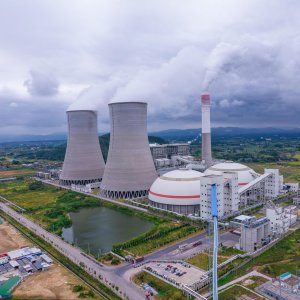Low-to-moderate-income (LMI) urban households and and rural households.China’s march toward its ambitious goals of peaking emissions before 2030 and achieving carbon neutrality before 2060 is largely driven by large-scale industrial and utility sector reforms. However, the next frontier—and the hardest to reach climate target group—lies within the nation’s low-to-moderate-income (LMI) and rural households. Successfully integrating...
Author: Vincent Mao (Vincent Mao)
China: The Politics of Climate Change
One of the most impactful actions China could take to reduce its GHG emissions further would be for the political leadership to halt the approval and construction of new coal-fired power plants nationwide.China, the world’s largest emitter of greenhouse gases (GHGs), is at a critical juncture. The nation’s efforts to curb its emissions and transition...
China: Nuclear Energy Updates
While nuclear power’s contribution to China’s overall energy mix is still relatively small, its growth is significant.Over the past five years, China has demonstrated a remarkable commitment to expanding its nuclear energy capacity. This surge is a cornerstone of the country’s broader strategy to enhance energy security, reduce reliance on fossil fuels, and meet ambitious...
China: What Recent Climate Polling Tells Us
The findings indicate a generally high level of public awareness and strong support for climate action and national carbon neutrality goals.This report synthesizes recent polling data to provide a comprehensive understanding of public opinion in China regarding climate change policies and programs. The findings indicate a generally high level of public awareness and strong support...
China: 2025 Mid-Year Emissions Report Card
China’s emissions fell by 1.6% year-on-year in the first quarter of 2025. This reduction is primarily attributed to a 5.8% drop in the power sector’s CO2 emissions in Q1 2025. As of mid-2025, China’s climate action presents a complex yet increasingly promising narrative. The nation, the world’s largest emitter, is demonstrating significant progress in its...
Climate Justice and Renewable Energy Access in China: A Technical Policy Analysis
Executive Summary China has positioned itself as a global leader in renewable energy deployment, with the world’s largest installed capacity of solar, wind, and hydropower. However, significant disparities in access to clean energy persist, particularly among rural populations, ethnic minorities, and urban low-income groups. The lower accessibility is mainly driven by infrastructure investments, corruption in...
Nature-Based Solutions in China: A Green Strategy to Combat Climate Change
NBS will remain a key component of its climate strategy—but they must be complemented by deeper systemic changes to achieve meaningful progress.As the world’s largest emitter of greenhouse gases, China faces mounting pressure to reduce its carbon footprint. While the country has invested heavily in renewable energy and technological innovations, it increasingly turns to nature-based...
China Embraces Automation to Tackle Transportation Challenges and Create a More Sustainable Future
China is experiencing a transportation metamorphosis driven by the rapid growth of automated public transit. From driverless subway cars gliding beneath bustling city streets to electric buses silently navigating urban corridors, the nation is embracing automation to tackle transportation challenges and create a more sustainable future. Recent data reveals the impressive scale of this transformation...
Domestic Market Penetration Rate for New EV Cars Exceeded 50% for Seven Consecutive Months
2024 was a banner year for electric vehicles (EVs) in China. Over 6.5 million traditional vehicles were scrapped and replaced, and the domestic market penetration rate for new EV cars exceeded 50% for seven consecutive months starting in June. Annual domestic EV retail sales reached a remarkable 11 million units, a testament to the rapid...










